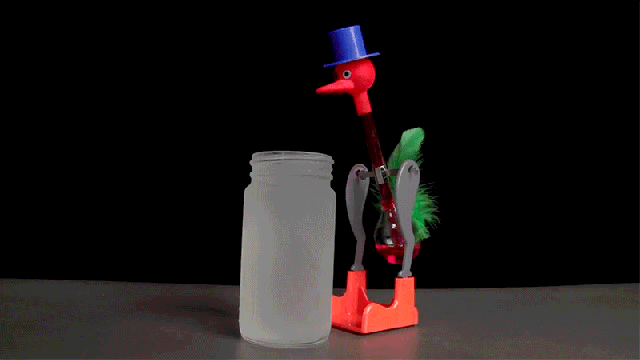At some point in your life you’ve almost certainly marveled at the classic drinking bird toy, and probably lost a few brain cells trying to figure out how it works. Don’t be ashamed if you never successfully unravelled the science, though, as engineerguy Bill Hammack explains, even Einstein apparently couldn’t crack it.
So how does it work? Einstein refused to disassemble the toy to reveal its secrets, but Hammack did, and the science and engineering that power it are utterly fascinating. Invented in 1946 by a Bell Labs scientists named Miles V. Sullivan, the drinking bird’s most interesting illusion isn’t its thirst, it’s the liquid inside. What looks like water dyed red is actually methylene chloride which boils and turns to a vapour at room temperature.
And the ease at which methylene chloride transitions from a liquid to a vapour and back again during tiny temperature changes is what powers the bird. The head is normally filled with high-pressure methylene chloride vapour, but as it cools and condenses, a pressure difference is created between the bird’s upper and lower glass bulbs, causing liquid to rise and fill the head. As the bird’s head fills with heavier liquid, its centre of gravity changes, so it tips forward until it drains and fills with the lighter methylene chloride vapour again.
A glass of water (or other room temperature liquid) is key to the bird’s continuous thirst, as when it tips forward the fabric wrapping around its beak and head absorbs water which eventually evaporates and cools the head, causing the methylene chloride to once again condense and the cycle to start over. Still having a hard time wrapping your head around it? Watch Hammack’s video. He could successfully explain rocket scientist to a toddler.
[YouTube]
